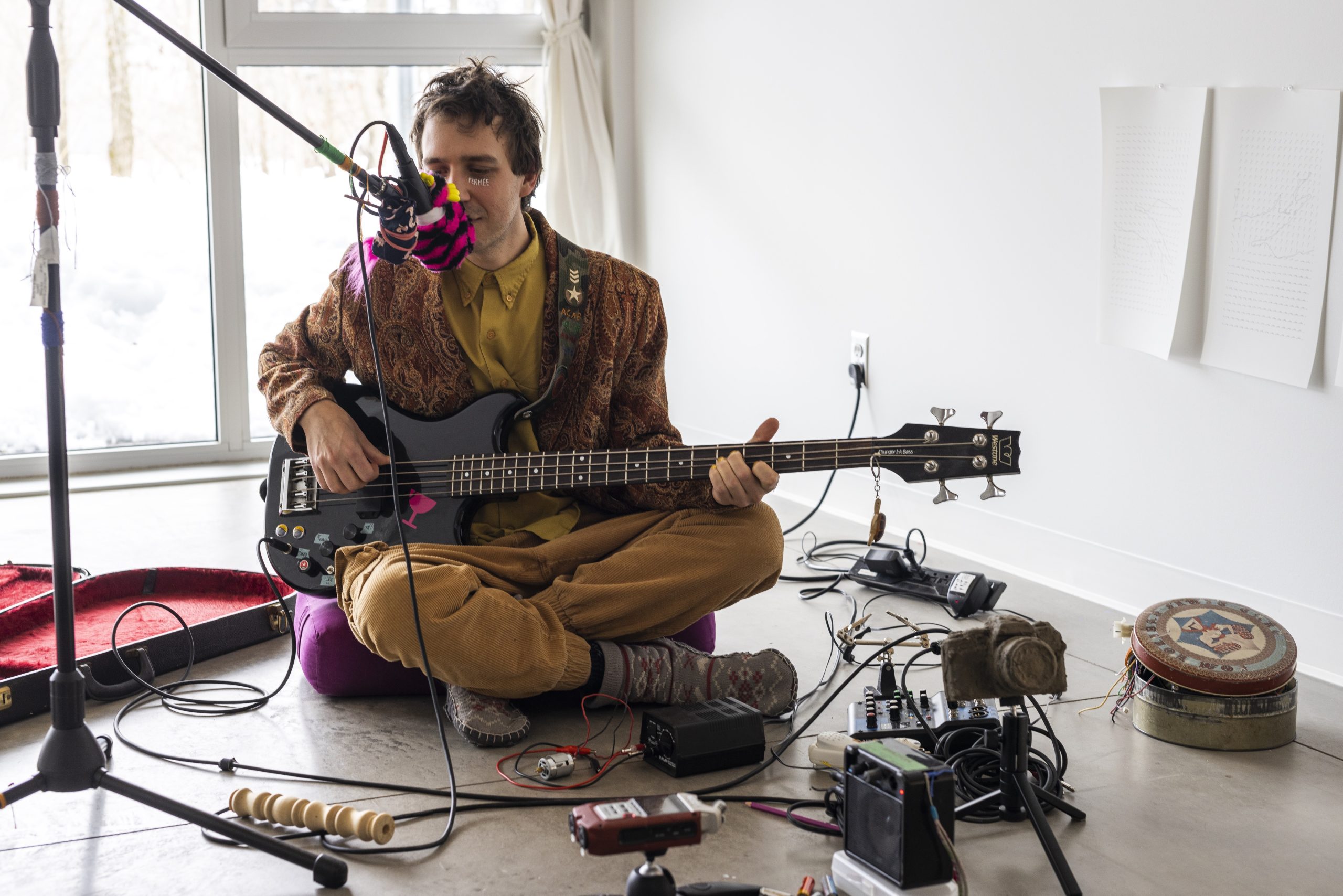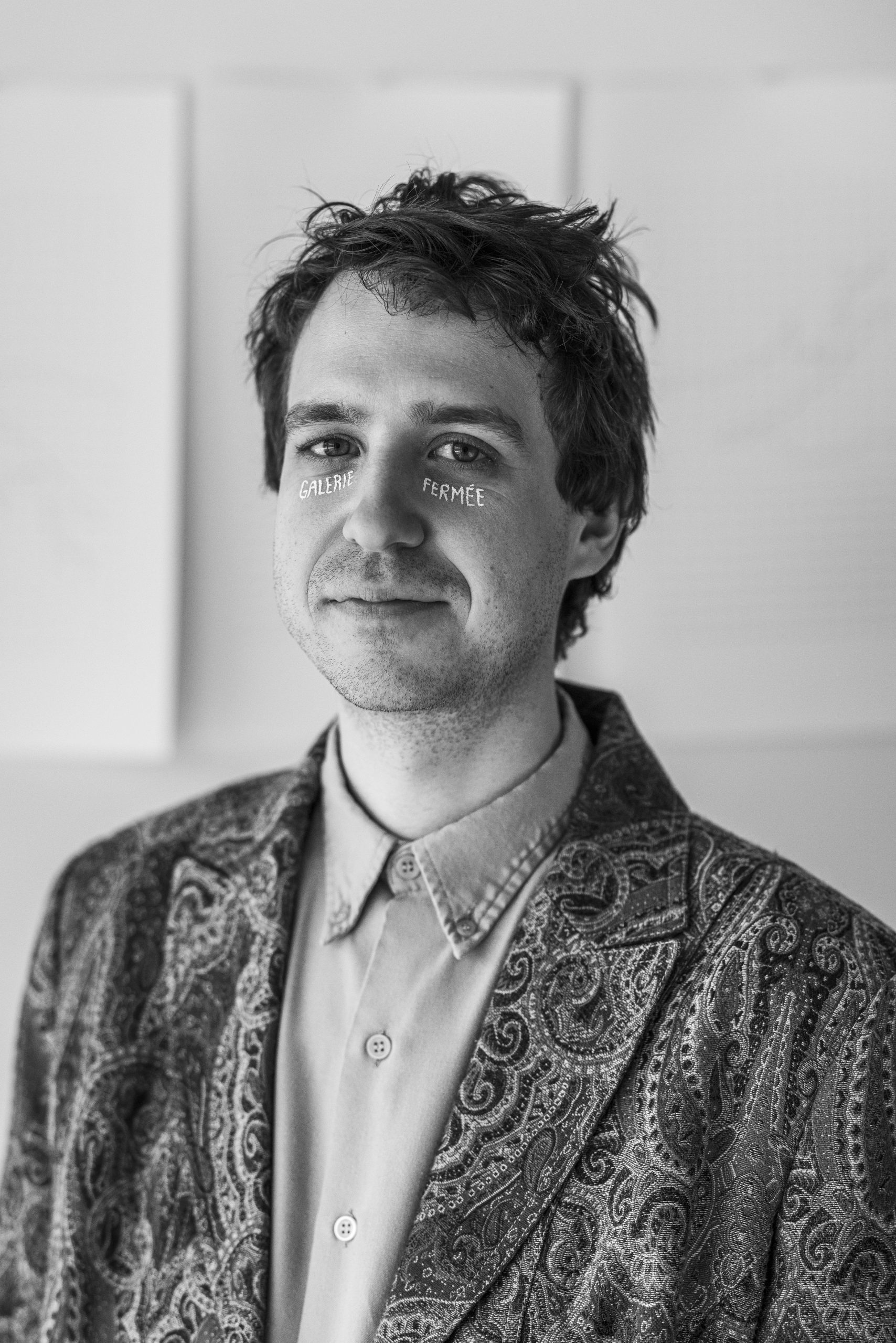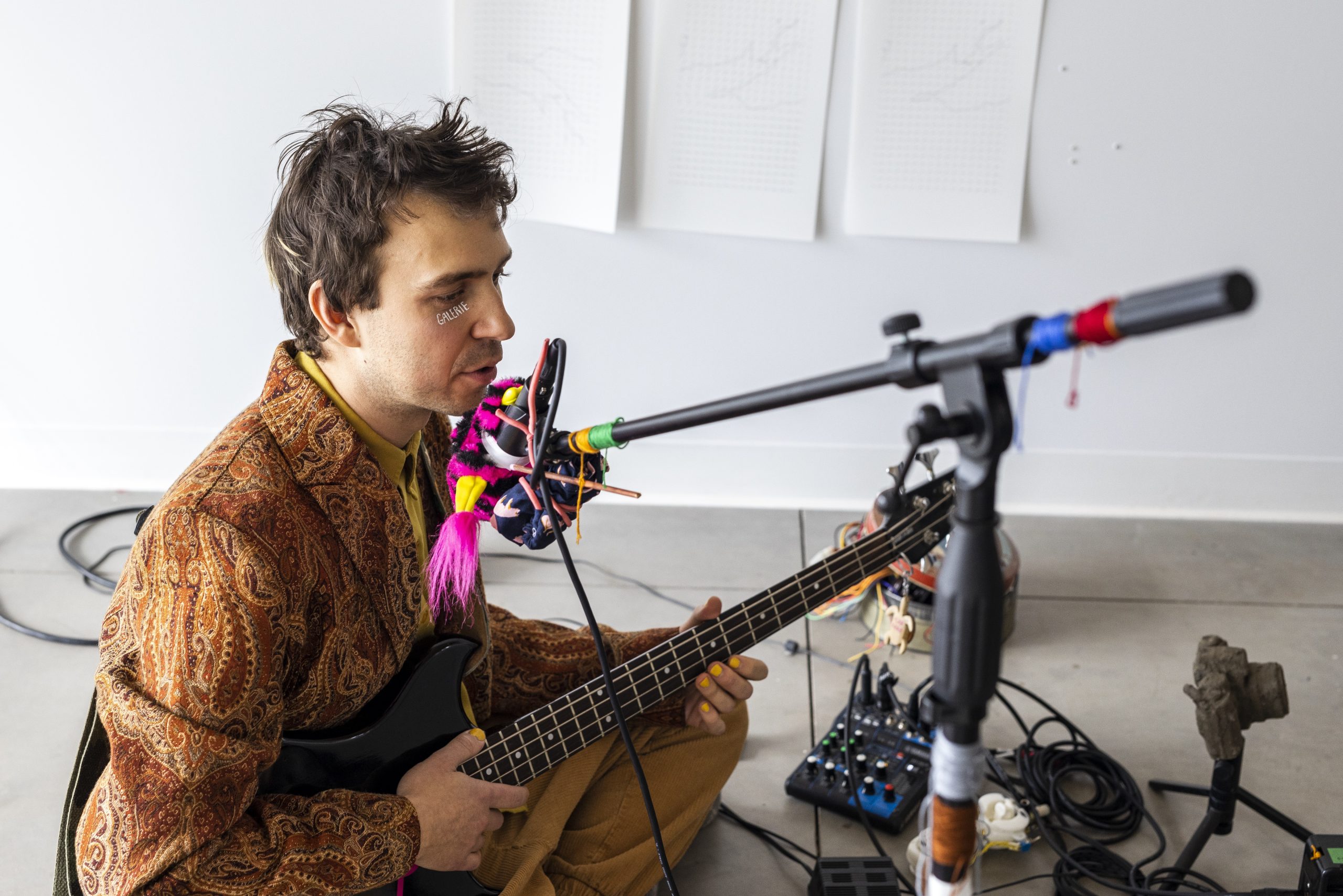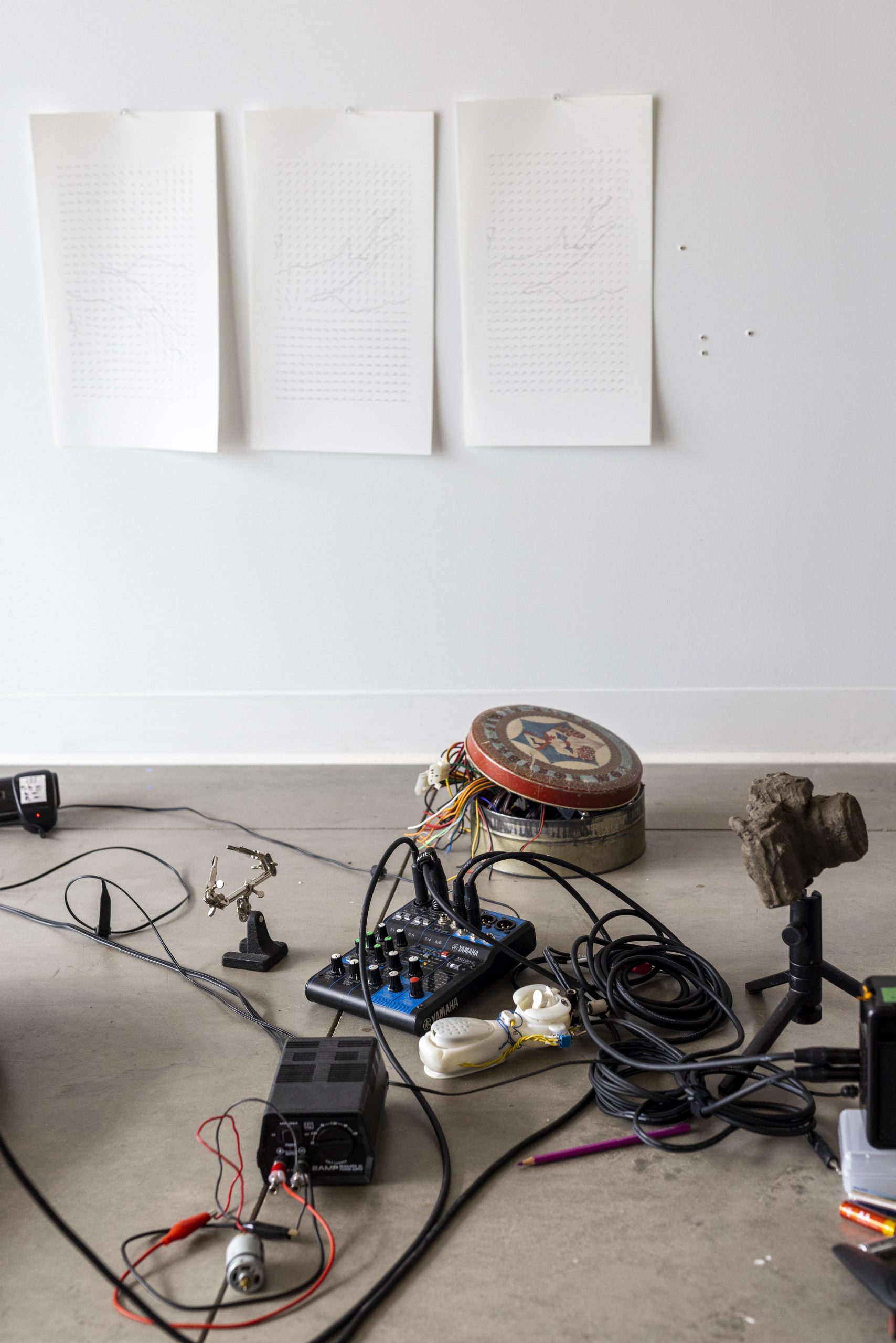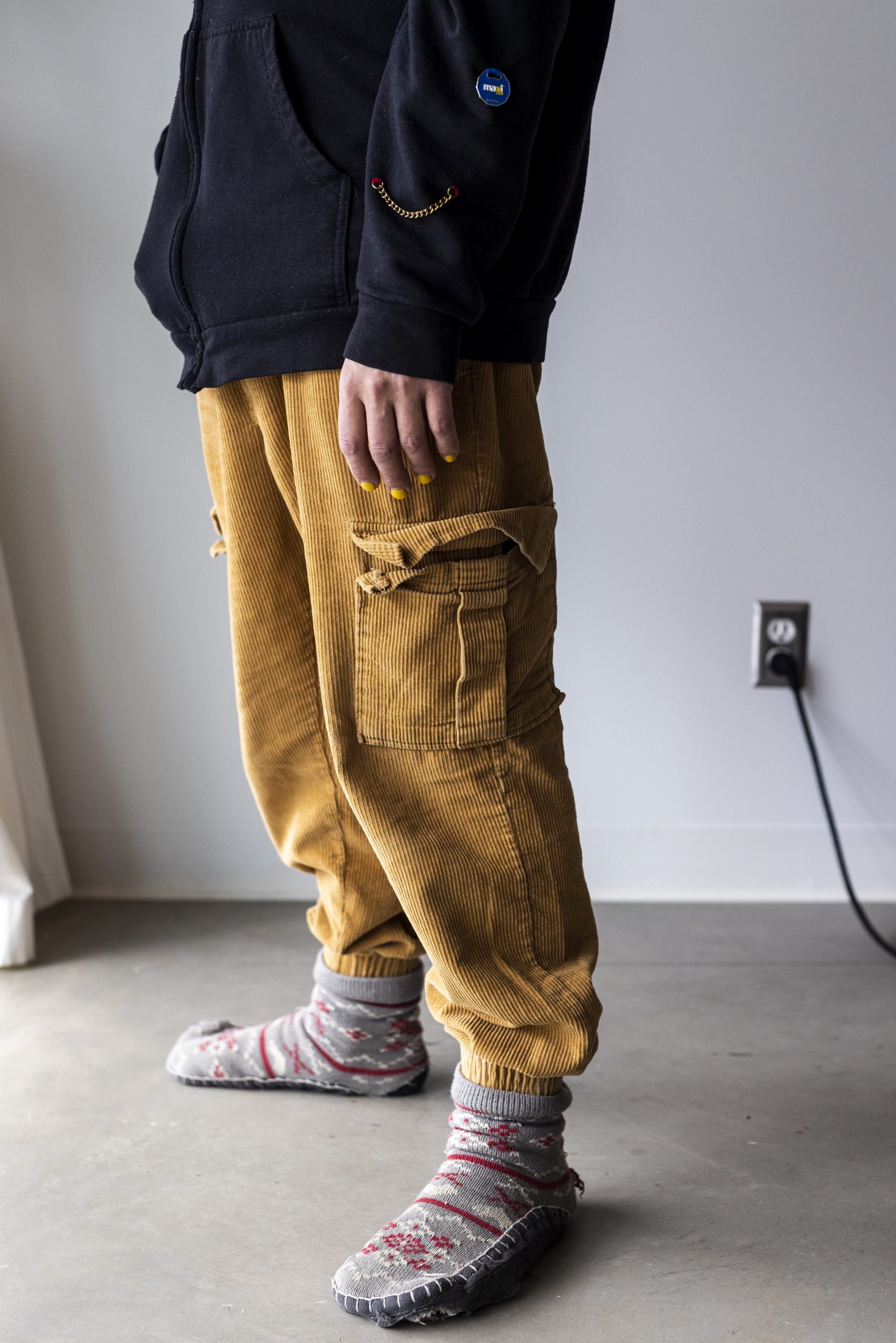Philip Gagnon
Testimony
Philip Gagnon is driven by an ethical and political impetus to insert himself into everyday life and the social fabric. In his main project, la galerie qui tuffera pas 3 ans, he makes his personal car into a “portable gallery,” creating contact zones with the public that bypass the official intermediary of the art world. Because the residency runs counter to his modus operandi, in which his main concern is the self-sufficiency of art, he is somewhat ambivalent about it. Indeed, this “bubble” contrasts with the marked austerity that he embraces in his practice as an aesthetic, a survival method, and a critical stance. Since the beginning of his stay, he has been haunted by an anecdote: before its renovation, the Est-Nord-Est building suffered from water infiltration, a lack of space, and the artists not sleeping on site; nevertheless, their lodging among people in the village encouraged relations with the local community, a situation that changed when the centre acquired autonomy. This example, and many others, led him to reflect on precarity, not as a state suffered but as a value chosen, precisely because it places us in a “position of community.”
Philosophical meditation may be one way to describe Gagnon’s research and creation process at Est-Nord-Est. This practice, inherited from ancient traditions in which it was conceived as a daily self-transformation exercise, takes place in constant relation with the outside world – whereas thought is ordered by reading, writing, walking, silence, listening, and conversation, among other processes. One of the books that Gagnon was interested in during this period was Paul Feyerabend’s Against Method (1975); Feyerabend’s thesis was that the methodological anarchism in philosophy of science legitimizes the transgression of established forms in the hope of bringing new ones forth. In addition, some activities that Gagnon calls “spiritual,” such as musical improvisation and the modification of found or electronic objects, enable him to undertake “appropriations by desecration,” precisely in order to instigate a dialogue with the concrete world, even in solitude.
In a similar logic of desecration, Gagnon’s performance during an evening open to visitors could be read as a means of short-circuiting the presentation context. Entering his lair, the audience saw the spectacle of the creative process, which it expected to find exposed before it, turn and look it in the eyes. In a “bed-in”–style performance of music and poetry, Gagnon staged a libertarian ballad recounting his attempts at producing portable art shows without a gallery and without money. Through humour, repetition, and accident, Gagnon conveyed the absurdity of the rituals and procedures to which we are collectively devoted. With its bittersweet vulnerability and redeeming spirit, Gagnon’s gesture ended up transforming the audience into smiling accomplices and gave a glimpse of open horizons, from both inside and outside the frame.
Biography
Philip Gagnon does not “live and work” on the island of Montréal.
Philip Gagnon is from Saint-Félicien, the town of cars.
Philip Gagnon drives a 2004 Hyundai Accent called la galerie qui tuffera pas 3 ans.
Philip Gagnon spends lots of time and money at the garage.
Philip Gagnon has not presented his work outside of Canada.
Philip Gagnon quit the Duolingo Spanish course after 30 consecutive days.
Philip Gagnon had to have his car boosted twice for his last project as a curator.
Philip Gagnon is a fan of the mechanics of the art field and its institutions.
Discover
Newsletter
Keep up to date with the latest news!
